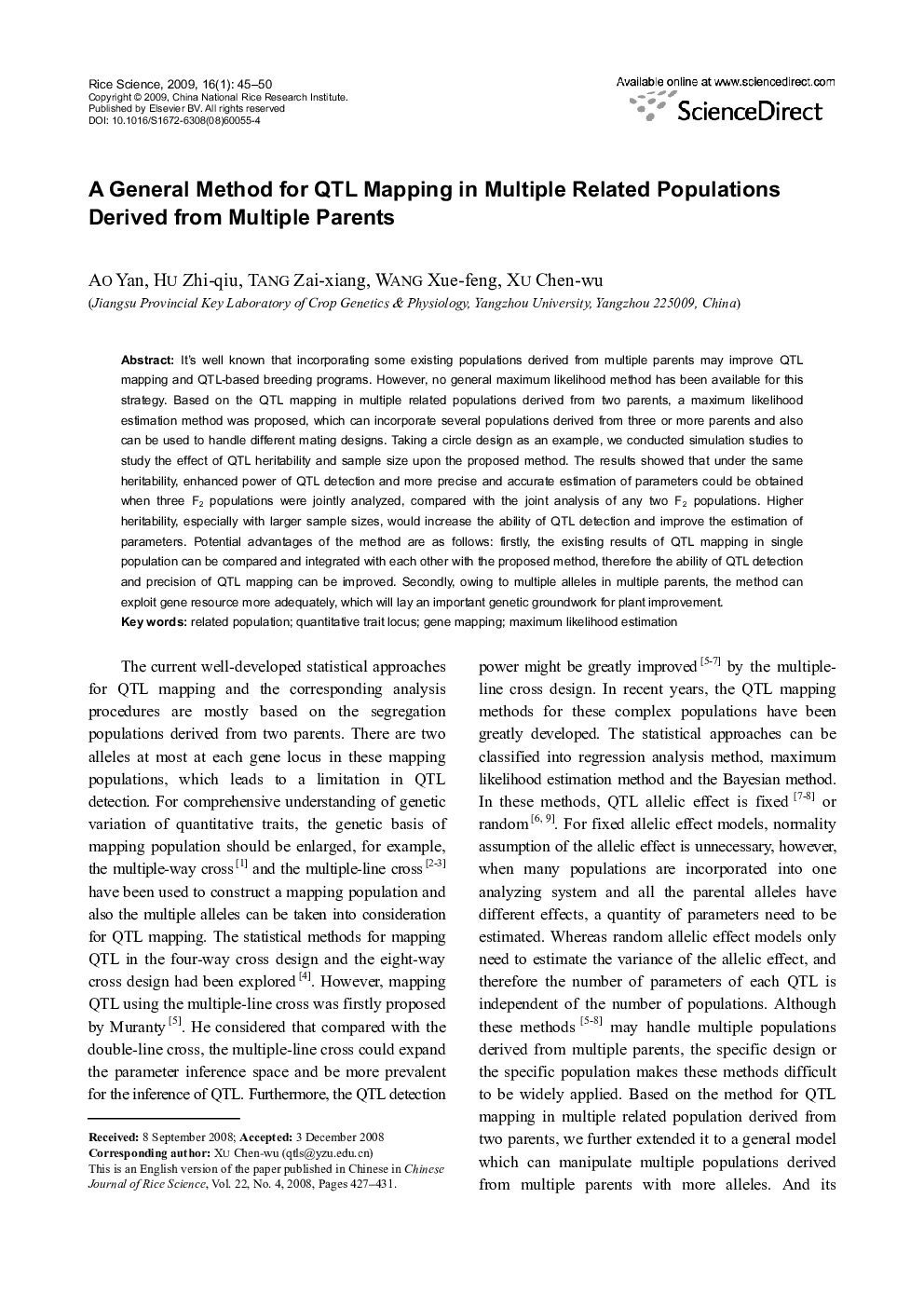| Article ID | Journal | Published Year | Pages | File Type |
|---|---|---|---|---|
| 4502114 | Rice Science | 2009 | 6 Pages |
It's well known that incorporating some existing populations derived from multiple parents may improve QTL mapping and QTL-based breeding programs. However, no general maximum likelihood method has been available for this strategy. Based on the QTL mapping in multiple related populations derived from two parents, a maximum likelihood estimation method was proposed, which can incorporate several populations derived from three or more parents and also can be used to handle different mating designs. Taking a circle design as an example, we conducted simulation studies to study the effect of QTL heritability and sample size upon the proposed method. The results showed that under the same heritability, enhanced power of QTL detection and more precise and accurate estimation of parameters could be obtained when three F2 populations were jointly analyzed, compared with the joint analysis of any two F2 populations. Higher heritability, especially with larger sample sizes, would increase the ability of QTL detection and improve the estimation of parameters. Potential advantages of the method are as follows: firstly, the existing results of QTL mapping in single population can be compared and integrated with each other with the proposed method, therefore the ability of QTL detection and precision of QTL mapping can be improved. Secondly, owing to multiple alleles in multiple parents, the method can exploit gene resource more adequately, which will lay an important genetic groundwork for plant improvement.
